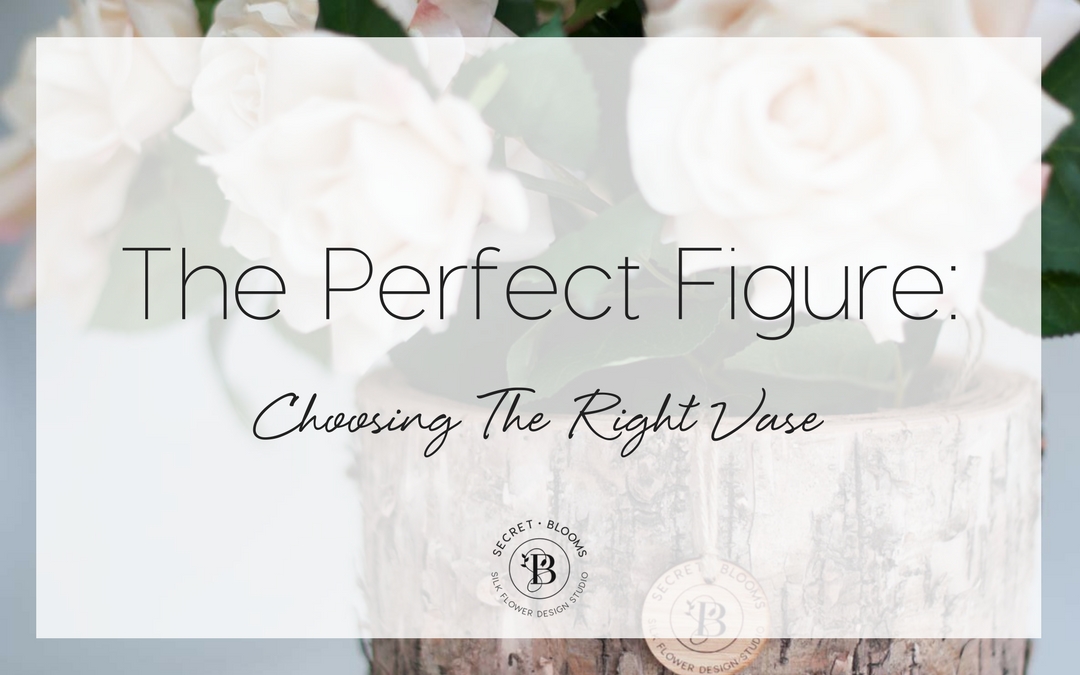So you’ve got yourself some gorgeous blooms? Let me guess. Fresh or fake flowers you’re a little reluctant to snip that florist string of the bouquet for fear of never being able to arrange it quite like it looks in its perfect hand tied state? Good news – you’re not alone! If you’re anything like I used to be you’ll work a little bit too hard to find a vase in the depths of your pantry that you can slip the hand tied bouquet into – as is!
The good news continues. Once you know which vase shape suits which bouquet type, you’ll never have to worry about freeing florist tied blooms again. You will likely also find renewed enthusiasm for those vases you have hidden away in the depths of the pantry!
Knowing what flower and bouquet shapes go with which style of vase can instantly transform a very ordinary display into something quite bloomingful!
The Perfect Figure – Vase Shapes
Column Vase. This straight sided vase, with no narrowing looks great with large bunches of mixed blooms. Keep the stems a similar length and make sure the flowers are full.
Tapered Vase. My personal favourite. The tapered vase is to long stemmed bouquets what spanx are to all normal figured woman. This vase has a narrow neck and widens at the bottom. It is great in providing support to flowers and looks elegant with long stemmed bouquets that are either hand-tied or loose. If you have an arrangement that features multiple flower types, aim to get a larger, feature flower head sitting at the base of the neck – giving the arrangement a focal point – with the smaller flowers and lighter foliage sitting higher and to the sides.
Flared Vase. Narrow at the bottom and widening at the top, the flared vase gives flowers a lot of freedom but less support. Big bunches of flowers or flowers with large blooms such as hydrangeas are needed to fill the opening at the top of the vase so that the flowers don’t splay out awkwardly.
Rounded Vase. The rounded vase allows stems to spread out while holding them neatly at the top. Keep arrangements simple with just one or two types of flowers of similar length such as a bunch of roses or for a more dramatic look – go tall with lilies delphiniums.
The Pitcher. A glass pitcher suits loose, delicate stems. Cut your stems so that only the flower head sits above the lip of the pitcher. Arrange the stems in your hand first by simply layering the stems (if you’re using more than one type) and then letting it fall loosely into the pitcher. For ceramic pitchers – my personal favourite – nothing beats a full bodied display like hydrangea. As pitchers are broader at the base tapering to the neck, the size rule we mention later does not ordinarily apply. Stay low and wide with pitcher bouquets.
Bud Vase. Any small vase, water glasses or even jam and vintage jars can be used – in fact, an assortment of these look great together on the dining table or kitchen bench. Keep the blooms loose, uneven in number and in groups. Alternatively, create a simple but elegant look with single stems. This style of arrangement is perfect for entertaining at dinner parties as the arrangement won’t obstruct conversation across the table.
Perfect Proportions – Vase Size
The size of your vase is as important as the shape of your vase. The general rule when choosing the size of your vase is that it should be around one third of the height of the arrangement. There is nothing worse than having too few flowers in a very large vase or very tall flowers in a vase that is too short. However, if you wish the vase to be the centre of attention, for example when you have a very interesting vase or it has a beautiful texture, invert the rule upside down.
Remember, you can always add to the size of your arrangement by adding foliage from the garden. Leaves, sticks and bark are easy to add and can create a whole new look to your arrangement as well as adding bulk if your vase be too big.
When considering the size of a vase, don’t forget the width of the mouth of the vase – the wider the mouth, the more blooms that will be needed.
Through the Looking Glass – Vase Texture
A textured or coloured vase can add interest to your bouquet. However, don’t fall into the trap of thinking that you can only use ceramic or textured vases for fake flowers. Many of our flowers are water friendly and look gorgeous in a glass vase mixed with fresh foliage from the garden.
Glass vases can also be accessorised to add texture without water. Large leaves such as monstera and anthurium are great for lining vases. For column vases, fabric such as hessian tied with ribbon or string can be used to line the outside of the vase and long branches such as birch branches can be used to line the inside. Two of our favourite accessories to vases is our green wire mesh and our willow vine. Both add great texture and also help support flowers which might be cut at different lengths.

